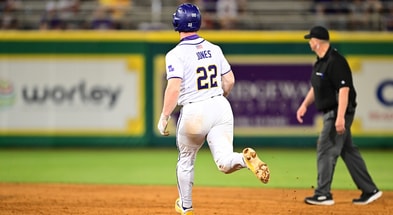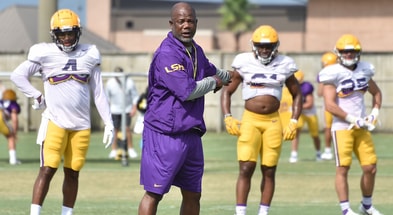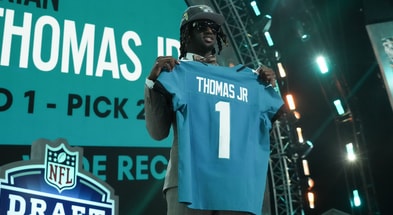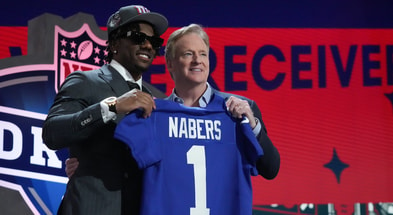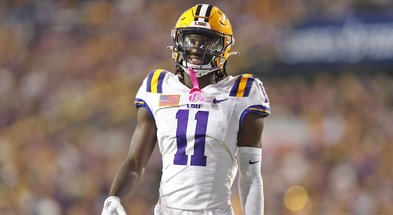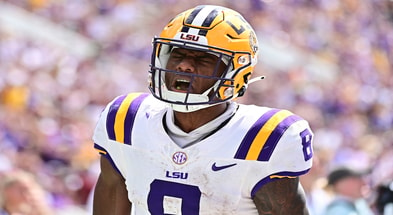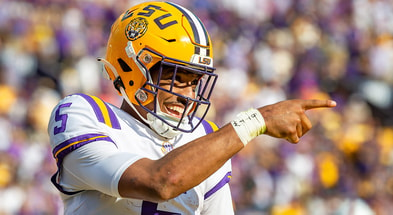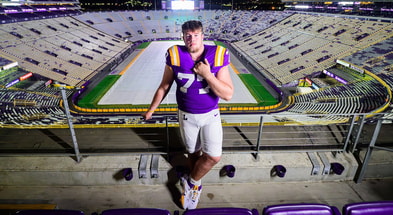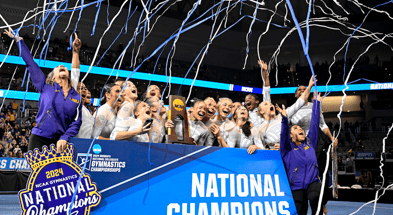LSU OL Cameron Wire enters NCAA Transfer Portal
LSU offensive tackle Cameron Wire has entered the transfer portal, On3’s Matt Zenitz reported on Friday.
A player with 10 starts in his first three years and 22 appearances from 2019 through 2021, Wire was expected to start at tackle for the Tigers in 2022. After a rough performance in the season-opening loss to Florida State, Wire was relegated to the second string and played in just three other games this season.
Despite being a senior, Wire was able to use his redshirt this season, playing only four games. He did not redshirt in his first three years at LSU. The 6-foot-6 senior from Gonzales was able to bounce from guard to tackle under Brad Davis and will look for somewhere to contribute in 2023. He also has his COVID season, giving him two years of eligibility remaining.
Wire was rated 89.33 by the On3 Consensus, making him a fringe four star prospect before committing to LSU. He also took a visit to Oklahoma during the recruitment process and had offers from Alabama, Texas, and other top programs.
Brad Davis has a healthy amount of youth in the offensive line room to start in the coming years, so losing a player like Wire really only impacts the potential depth. Still, Davis was able to make the most of the offensive line this year and will look for more bodies to add to the rotation this offseason.
Brian Kelly updates LSU’s approach to the Transfer Portal
Following the SEC Championship, LSU head coach Brian Kelly went into more detail on his plan to attack the NCAA Transfer Portal over the next 45 days.
“They have got to be the right fit first,” Kelly said. “They have to recognize the value of an education from LSU. They have to have the right traits. We are not just open for business. We’re not just putting a sign up saying, hey, we are going to take whoever. They have to be the right fit. I prefer that they are from the state of Louisiana if we can find them. And then we are going to address needs based upon how that freshman class marries into it by the particular needs by position class.
“So we are not going to overload a particular position group. In other words, if we have got three or four wide receivers that are freshmen coming in, you may not see a heavy influence in the portal in that position.
“We are going to develop based upon our freshman class, too. So we are doing this at the same time, and also allowing our program to be younger, too. We want to bring both of these along. We don’t always want to be a turn-it-over program where we are bringing in transfers and turning the program over.
“So we need to grow and you’ve got to do that by recruiting freshmen and giving them the opportunity to step on the field and develop. And you can’t do that if you keep bringing in freshmen at one position and then bringing a portal guy who has got one year and putting it in front of him.”
The Transfer Portal Windows
The NCAA Transfer Portal’s newest rules will allow 60 days per year for student-athletes to enter the portal and maintain immediate eligibility for first-time transfers. For fall sports like football, the window will be split into two periods.
The first, a 45-day period, begins December 5. A second window will be instituted from May 1-15, giving players an option to enter the transfer portal after spring camp.
The first portal window will close on January 19.
The Transfer Portal Guidelines
The NCAA transfer portal, which covers every NCAA sport at the Division I, II and III levels, is a private database with names of student-athletes who wish to transfer. It is not accessible to the public.
Once a player’s name shows up in the portal, other schools can contact the player. Players can change their minds at any point and withdraw from the portal. However, once a player enters the portal, the current scholarship no longer has to be honored. In other words, if a player enters the portal but decides to stay, the school is not obligated to provide a scholarship anymore.
The database is a normal database, sortable by a variety of topics, including (of course) sport and name. A player’s individual entry includes basic details such as contact info, whether the player was on scholarship and whether the player is transferring as a graduate student.
A player can ask that a “do not contact” tag be placed on the report. In those instances, the players don’t want to be contacted by schools unless they’ve initiated the communication.



